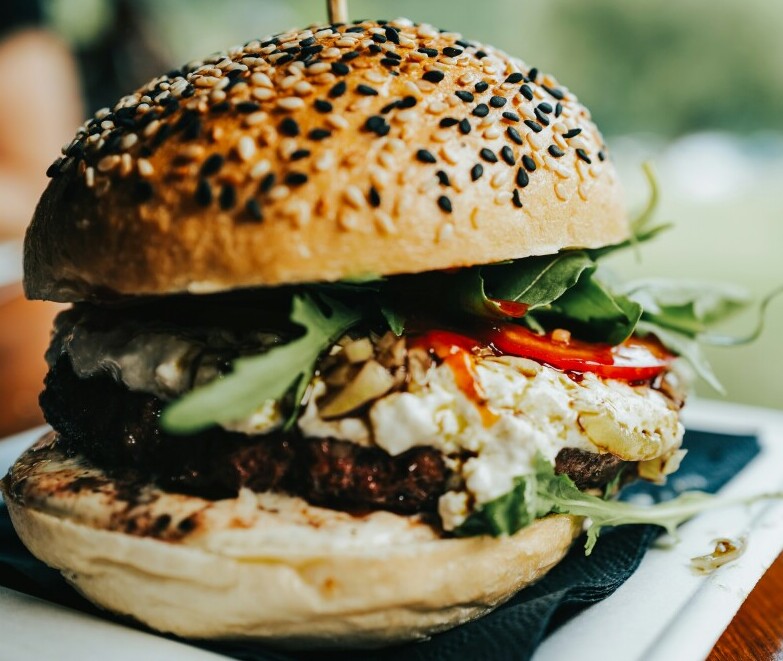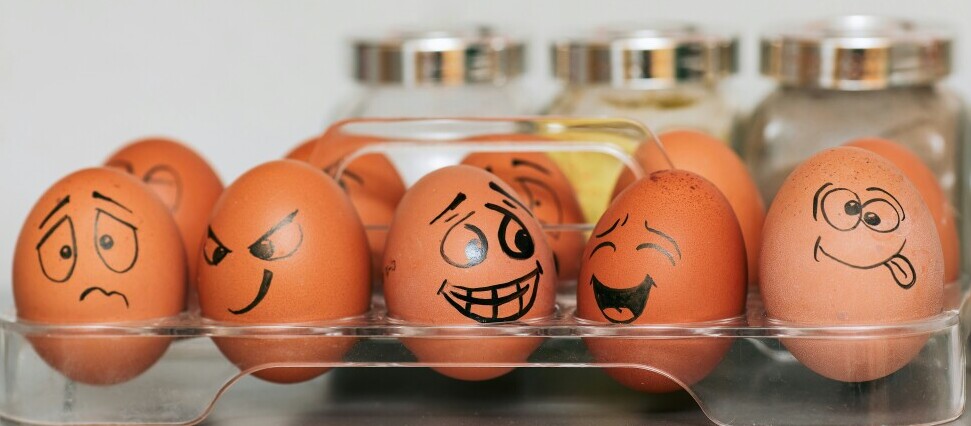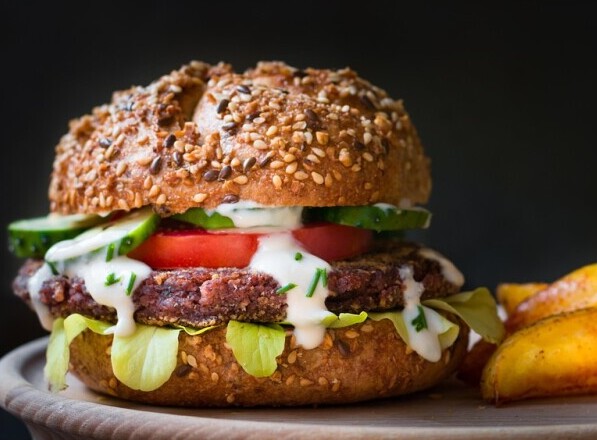Texture is that secret magic that turns a decent veggie burger into an unforgettable meal. It’s not just about taste; the way your teeth sink into that patty plays a huge role in the overall experience. Ever bitten into a burger only to find it feels a bit soggy or strangely dense? Yeah, we’ve all been there, and it’s a total buzzkill.

One of the most common challenges when making veggie burgers is getting the texture just right. Nobody wants a burger that crumbles apart or turns into mush. Here are some burger texture tips to ensure veggie burger perfection:
- Balance Moisture Levels: Too much moisture can make your burger fall apart, while too little can make it dry. Use ingredients like oats, breadcrumbs, or cooked quinoa to absorb excess moisture.
- Use a Binding Agent: Egg, flaxseed meal mixed with water, or mashed beans can help bind ingredients together for a textured veggie burger that holds its shape.
- Don’t Overprocess Ingredients: When using a food processor, pulse ingredients instead of blending to maintain some texture and bite.
- Chill the Mixture: Letting your burger mixture sit in the fridge for 30 minutes helps the flavors meld and firms up the patties.
A common misstep happens when the ingredients aren’t balanced properly. Too much moisture can lead to a mushy mess, while not enough binding results in a patty that falls apart at the first bite. Getting the texture right means hitting that sweet spot where your burger’s firm but not tough, soft but not falling apart.
The way a burger feels when you take a bite influences how you perceive its flavor. It’s wild how the perfect texture can make the flavors pop even more, giving your taste buds a serious run for their money. Think about how a crispy edge can contrast with a tender center—it’s a game-changer, making every bite a mini adventure.
Figuring out texture in veggie burgers is kind of like an art form. Once you start to understand the different elements at play, you’ll be on your way to crafting your own masterpiece that’ll make even the biggest meat lovers envious.
Choosing the Right Ingredients: The Foundation of Texture
Getting the ingredients right is the bread and butter of nailing that perfect veggie burger texture. Beans, grains, and veggies each bring their own unique twist to the table. Beans like black beans and chickpeas add a hearty base, grains such as quinoa or bulgur can lend a nice chewiness, and veggies like mushrooms keep everything juicy and flavorful.
Creating the right balance between wet and dry is where the magic happens. You want enough moisture to keep things juicy but not so much that your burger feels more like a soggy sponge. Dry ingredients like oats or breadcrumbs act as the glue that holds everything together, soaking up the excess moisture. It’s all a delicate dance between these elements to get that texture just right.
The way you process your ingredients can totally switch things up. For instance, raw veggies might give your burger a chunkier texture, while cooked ones tend to blend into the mix more smoothly. Trying out different cooking styles for your ingredients might just unveil a new favorite texture.
There’s more than one way to stack a burger, and experimenting is half the fun. By mixing and matching these basic building blocks, you can customize your burgers to meet your personal texture goals. Think of it like crafting a signature dish that reflects your taste and flair.
The Power of Binders: Ensuring Structural Integrity
When it comes to creating a veggie burger that holds up under pressure, binders are your best friend. Think of them as the silent heroes, keeping your patty intact during the cooking process and first bite. Without a good binder, you’re looking at a crumbled mess on your plate rather than a burger.
Natural binders like flaxseeds or chia seeds are amazing because they gel up nicely when mixed with water, providing a plant-based alternative to traditional binders. These seeds are not only great for texture but add a nutritional boost, making them a win-win for your patty.

Eggs are the go-to binder for many but aren’t the only option. Vegan alternatives like psyllium husk or aquafaba (the liquid from a can of chickpeas) work wonders too. These options open up doors for various dietary preferences and still provide the binding power needed to keep things together.
Getting experimental with different binders can lead to discovering new textures you never thought possible. Mixing it up can prevent boredom and lead to some really tasty surprises. Each binder offers something different, so don’t hesitate to try them all out and see which one takes your burger game to the next level.
Cooking Techniques: Bringing Veggie Burgers to Life
Cooking methods make all the difference in achieving the desired texture in your veggie burger. Grilling, baking, or pan-frying each bring distinct effects to the burger’s final form. Grilling is excellent for a smoky flavor and those picture-perfect grill marks. Baking allows for even cooking without the need for flipping, but might not give you that crispy outer layer without a little help from the broiler. Pan-frying, on the other hand, gives you control to achieve that golden crust that’s all about texture.
Temperature and time are your allies when aiming for perfection. Too high, and you risk a burnt exterior with a raw interior. Too low, and your burger ends up more steamed than seared. The aim is getting that balance where the crust is crisp, yet the inside remains juicy and firm. A medium heat generally works well, ensuring that lovely Maillard reaction for flavor while keeping the texture spot on.
Creating a great crust while maintaining a tender interior is a bit of a balancing act. A quick trick for achieving both is to press the patties lightly in the pan to get better contact, which encourages a nice crust. When baking, switching to the broil setting for the last few minutes can deliver that coveted crispy finish.
The beauty of different cooking techniques lies in their ability to transform the same recipe into something new each time. By playing around with them, you might discover a method that suits your texture preferences best, giving you another tool in your veggie burger arsenal.
Troubleshooting Texture: Addressing Common Issues
Sometimes, even with the best plans, veggie burger texture can go a bit haywire. Don’t sweat it, though, because there are some quick fixes to rescue your creation. If the texture feels mushy, it’s often an issue with too much moisture. Adding an extra binding agent like breadcrumbs or increasing the dry ingredient content can help soak up excess liquid and firm things up.
On the flip side, if your burger turns out dry and crumbly, it might be crying out for a bit more moisture. A splash of vegetable broth or a dollop of your favorite sauce can rehydrate the mixture. Sometimes, simply mixing the burgers again to distribute the moisture evenly can make a world of difference.
Ever find yourself dealing with patties that won’t hold their shape? Adjusting the quantities of your binders can work wonders. Whether it’s a bit more egg substitute or an extra spoonful of chia gel, finding the perfect binder balance is crucial.
Ingredient moisture levels can vary, affecting the final texture. Seasonality and freshness play a huge role, so flexing with the seasons and adjusting your recipe accordingly is a pro move. Remember, no two veggies are exactly the same, so staying adaptable is your best bet for consistently great results.
How to Make Veggie Burgers That Are Grill-Worthy

Grilling veggie burgers requires a bit of finesse, but with the right approach, you can achieve a crispy exterior and firm interior. Here are some tips for veggie burger grilling success:
Preheat the Grill: A well-heated grill prevents sticking and ensures a nice sear.
Brush with Oil: Lightly brushing your patties with oil before grilling helps create a crispy crust.
Use a Grill Mat or Foil: If your patties are delicate, use a grill mat or foil to prevent them from falling through the grates.
Flip with Care: Wait until the first side is well-browned before flipping—this usually takes about 5 minutes.
Recipe: The Best Grilled Veggie Burger
Now that you know the secrets to veggie burger mastery, let’s put them into action with a mouthwatering recipe!
Ingredients:
1 can (15 oz) black beans, drained and mashed
1/2 cup cooked quinoa
1/2 cup finely chopped mushrooms
1/4 cup grated carrot
1/4 cup finely chopped onion
1/4 cup breadcrumbs
1 tablespoon ground flaxseed mixed with 3 tablespoons water (flax egg)
1 teaspoon smoked paprika
1 teaspoon garlic powder
1 teaspoon soy sauce
Salt and pepper to taste
1 tablespoon olive oil
Instructions:
In a large bowl, combine the mashed black beans, quinoa, mushrooms, carrot, and onion.
Stir in the breadcrumbs, flax egg, smoked paprika, garlic powder, soy sauce, salt, and pepper.
Mix well until the mixture holds together. If it’s too wet, add more breadcrumbs; if too dry, add a little water.
Shape into 4 evenly sized patties and refrigerate for 30 minutes.
Preheat the grill to medium-high heat and brush the patties lightly with olive oil.
Grill for about 5 minutes on each side or until golden brown and firm.
Serve on a toasted bun with your favorite toppings and enjoy!
By following these veggie burger tips, you’ll be well on your way to veggie burger perfection. Whether you’re a seasoned pro or just starting out, these burger texture tips will help you create the ultimate plant-based patty. Happy grilling!

Mastering the perfect veggie burger is such an interesting challenge! Achieving the right texture without it being too mushy or too dry is key, and it’s great to see tips that help strike that balance. One thing I’ve found is that adding a mix of grains, like quinoa or bulgur, can really help with texture while also enhancing the overall flavor.
Another important factor is the binding agent—eggs and breadcrumbs are common, but for vegan options, flaxseed or chia seeds work surprisingly well. Have you found any unique binders that work better than others for holding everything together?
I also love the idea of experimenting with different seasoning blends. Smoked paprika, cumin, and even a hint of liquid smoke can add such a rich depth of flavor.
This was a great read with helpful insights!
Laura,
I am still in the process of mastering vegan cooking and grilling. I have found the grains you spoke (quinoa and bulgar) truly help the overall flavor as well as increasing the nutritional value. Finding the right binder for your burger will require you to experiment a bit more. I have found an egg substitute can be beneficial as a binder but it depends upon your preference.
Jerry
Getting the perfect texture in a veggie burger can be tricky, so these tips are super helpful! Balancing moisture while keeping it firm enough to hold together is definitely an art.
I’ve found that chilling the mixture before cooking really helps prevent crumbling, and using a mix of beans and grains gives it a hearty bite.
Have you found that certain binding ingredients, like flax, eggs or breadcrumbs, work better than others for keeping veggie burgers intact without drying them out?
Marlinda,
I am still learning how to grill for a vegetarian so my knowledge is limited at this time. I have found using quinoa and flax do help balance the moisture in my veggie burgers, I have also been experimenting with vegetarian egg substitute as a binder.
Jerry
This article really hit home for me. I’ve often struggled with getting my veggie burgers to hold together without becoming either too mushy or falling apart entirely. The detailed tips on balancing moisture and choosing the right binders were eye-opening, especially the part about letting the mixture chill before cooking. It’s clear that texture isn’t just a technical detail it’s what makes the burger truly memorable. I can’t wait to try out the recipe and experiment with some of those alternative binding agents. Great read that turns a simple meal into an art form!
Dan,
Many people have forgotten that chilling your burgers beforehand allows you to have a patty that welcomes the heat. Your patty will continue to bind as it grills, leading you to having a great tasting burger and becoming a hero to those present.
Jerry
Such a great guide for perfecting the texture of veggie burgers! I love the tips on balancing ingredients like beans, vegetables, and grains to create a satisfying bite. The advice on binding agents like flaxseed or breadcrumbs is especially helpful for ensuring the burger holds together without being too mushy. It’s great to see how small adjustments can make a huge difference in texture and flavor. Can’t wait to try these tips next time I make veggie burgers!
A Jaynes,
Grilling to perfection is often about making small adjustments so you can have great tasting food. Once you learn which items make the best binders, you will find creating the perfect veggie burger is no longer a problem. You have become the hero in your circle of friends.
Jerry
Wow, this post is packed with so much valuable info—I love how you break down the science of texture in veggie burgers! I’ve definitely struggled with patties that either crumble apart or turn into a mushy mess, so these tips are a game-changer. The idea of chilling the mixture before cooking is something I’ve never thought to do, but it makes so much sense!
Also, I really appreciate the variety of binding options you included—flax eggs have been my go-to, but I’m excited to experiment with aquafaba and psyllium husk now. And that grilled veggie burger recipe at the end? Absolutely making that this weekend! Thanks for such a well-written and helpful guide. Can’t wait to put these tips to the test!
Alice,
There are so many different ways to create the perfect veggie burger. I am happy to provide you with some of the shortcuts needed for taking out the excess moisture and helping you find a way to bind a better burger. Refrigerating your mixture before grilling makes all the difference in the world, your burgers stay together from the beginning allowing you to have a great grilling experience along with a great tasting burger.
Jerry
Mastering veggie burgers has been a real struggle for me. I find it challenging to get the texture just right without them falling apart or becoming too mushy. Plus, balancing the flavors is tricky—too much seasoning, and they overpower the vegetables, too little, and they feel bland. I’ve tried so many different recipes, I am definitely going to try your suggestions. Anyone else with similar struggles?
Iris,
I am still learning the art of grilling veggie or vegan burgers. I have found that when I don’t follow the directions, I end up with something not edible. I am still learning the art of preparing these delicious burgers properly.
Jerry
Texture really is the secret ingredient that takes a veggie burger from good to great! Finding the perfect balance of moisture, binding agents, and cooking methods can make all the difference. Love the tips on using different binders and cooking techniques to achieve that ideal crispy-yet-tender bite. Experimenting with ingredients and textures makes the process even more fun—there’s always room to refine and perfect your ultimate plant-based patty!
Herman,
Texture is very important in a burger, who wants one that is either mushy or like a brick. Veggie burgers are no different than any other burger, tender, juicy, and full of flavor. You can only get that texture by combining the ingredients correctly and making adjustments as needed.
Jerry
This guide is a game-changer for veggie burger enthusiasts! It dives deep into the often-overlooked art of texture, explaining how crucial it is to a satisfying burger experience. From balancing moisture with oats and quinoa to the magic of binding agents like flaxseed and aquafaba, the tips are practical and easy to follow.
I appreciated the focus on different cooking techniques and how they impact texture, as well as the troubleshooting section for common issues. The recipe provided is a perfect example of putting these principles into action. If you’re tired of mushy, crumbly veggie burgers, this is your go-to resource.
Phillip,
Many people, when they are first trying veggie burgers, become frustrated with the process. Like anything else, it takes time to master this skill. As you gain experience, you also find shortcuts, that will bring you great flavor in your veggie burger. Finding the right method for grilling veggie burgers takes time, but having your grill at the right temperature will start you down the right path.
Jerry
The tips about using ingredients like oats and breadcrumbs to absorb extra moisture are helpful. I also appreciate the emphasis on not over-mashing the beans to maintain a chunky texture, which adds depth to the burger. The suggestion to marinate the mixture in the refrigerator for 30 minutes is a great way to enhance the flavors and make the patties easier to handle. This guide provides excellent advice for achieving that perfect balance between a tender interior and a crispy exterior in veggie burgers.
Leah,
Refrigerating your mixture before forming patties makes it easier to form the patties so they hold together properly. After you begin grilling your patties, let them stay on the grill long enough to turn with no problems. Most people want to flip their patties in just a couple of minutes, let them cook long enough to solidify. You will be pleased with the results.
Jerry
I tried a few times to make veggie burgers, but the results were nothing to write home about. I never thought about how the cooking method affects the texture. I tend to avoid frying and seldom use a barbecue for lack of space. Thanks for the practical tips and explanations, I will definitely try like this next time. Did you by any chance experiment with different grains instead of quinoa?
MD,
I am still learning the different methods of grilling for vegans. I have not experimented with enough different products to know the best way. I use the recipes I have found to achieve the results I desire.
Jerry